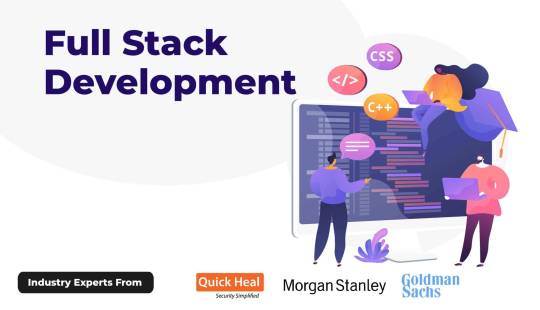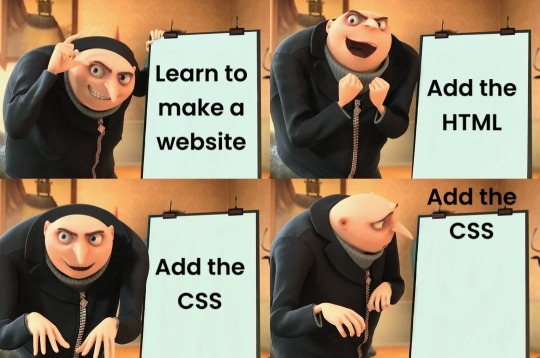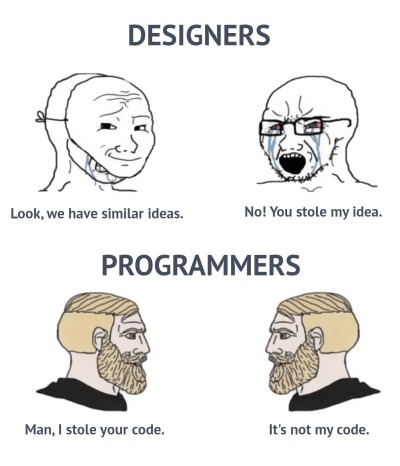#Full-stack developers
Explore tagged Tumblr posts
Text
How App Interface Design Is Evolving with AI and User-Centric UX Trends

App Interface Design's Evolution: AI and User-Centric UX Trends Consider this: The average smartphone user touches their device over 2,600 times a day. For heavy users, that figure soars past 5,400. Each tap, swipe, and pinch interacts directly with an interface designed to guide them. But are those interfaces truly serving users in 2025, amidst accelerating technological user-centric UX trends and the pervasive influence of AI in design? The traditional ways we conceived of and built interfaces are rapidly transforming, driven by sophisticated algorithms and a renewed, imperative focus on authentic user-centric design.
The AI Paradigm Shift in Interface Creation
Artificial intelligence isn't merely a tool add-on; it signifies a profound paradigm shift in how we approach the very foundations of app interface design. Overtly, AI automates routine tasks. Subtly, it augments creativity, analyzes colossal datasets with unprecedented alacrity, and stands poised to recalibrate the designer's role entirely. This isn't science fiction anymore; it's the operating reality for forward-thinking design teams.
AI Assisting Design Workflows
Integrating AI assistance into workflows offers tangible improvements in efficiency and opens avenues for novel design possibilities.
Automation of Repetitive Tasks: Tedious activities such as image slicing, code generation for basic components, or initial layout variations can be handled by AI. This frees designers to concentrate on more complex problem-solving, creative conceptualization, and strategic thinking. Think of AI not as replacement, but as a highly efficient junior assistant handling the groundwork.
Generating Design Variations: Based on established brand guidelines, user data, or even initial wireframes, AI algorithms can generate a myriad of design options in moments. This velocity allows for rapid iteration and comparative analysis, potentially unveiling design directions a human might not have considered within the same timeframe.
Predictive Analytics for User Behavior: AI's capacity to sift through vast quantities of usage data identifies patterns and predicts user actions with increasing accuracy. This predictive power directly informs design decisions, allowing interfaces to pre-empt user needs or present information most relevant to an individual's predicted journey within the application.
Ethical Considerations and Bias Mitigation
As AI becomes more entrenched in the design process, acknowledging and actively mitigating inherent biases is absolutely paramount. AI models are trained on data, and if that data reflects societal biases (racial, gender, ability, etc.), the AI will perpetuate them in its design outputs.
Vigilance is required to audit the data sources used for AI training.
Testing AI-generated designs across diverse user demographics is crucial to identify and rectify unfair or exclusionary outcomes.
Maintaining human oversight in crucial decision points of the design process safeguards against automated discrimination or ethically questionable design patterns. Designers become stewards, ensuring the AI serves human well-being and inclusivity.
The Core of User-Centricity in 2025
While technology sprints ahead, the raison d'être of design remains constant: serving the user. User-centric UX trends are less about adopting flashy tech and more about a deeply empathetic approach that prioritizes genuine human needs, contexts, and emotions. In 2025, "user-centric" holds a more nuanced, sophisticated meaning than ever before.
Understanding Evolving User Needs
User expectations aren't static; they morph with technological fluency and societal shifts. A truly user-centric design understands this fluidity.
Hyper-Personalization: Beyond simply using a user's name, personalization now demands interfaces that adapt content, features, and even visual style based on real-time context, historical usage, preferences, and predicted needs. This requires a granular understanding of individual users, facilitated by AI analysis.
Accessibility as a Universal Standard: Designing for accessibility is no longer an afterthought or an optional feature; it is a fundamental requirement. This encompasses not only compliance with guidelines (like WCAG) but designing intuitively for users with diverse cognitive, visual, auditory, and motor abilities from the outset. Inaccessible design effectively excludes large potential user bases.
Emotional Design (Kansei UX): Moving beyond usability, designers now consider the emotional resonance of an interface. Does it feel joyful, trustworthy, calming, exciting? Kansei engineering, originating in Japan, studies how users feel about products. Applying these principles to app interface design fosters deeper user engagement and loyalty by consciously eliciting positive emotional responses.
Measuring and Iterating on User Experience
Good design isn't guesswork; it's an iterative process informed by data and direct user feedback. Measuring the efficacy of designs is foundational to refinement.
Employing robust analytics to track user flows, completion rates, points of friction, and feature engagement.
Conducting diverse forms of user research: usability testing, interviews, surveys, and contextual inquiries.
Utilizing A/B testing and multivariate testing to compare design variations head-to-head based on quantifiable user behavior metrics.
Establishing continuous feedback loops, allowing designers to remain responsive to evolving user sentiments and needs over the product lifecycle.
Synergizing AI and User-Centric Approaches
The true power emerges not from choosing between AI-driven or user-centric design, but by strategically intertwining them. AI, when wielded through a user-centric lens, can elevate interfaces to new heights of relevance, adaptability, and intuitiveness. Conversely, user-centric design principles provide the ethical and humanistic framework that prevents AI from creating sterile, unhelpful, or biased interfaces. This confluence marks the frontier of advanced app interface design.
Designing Adaptive Interfaces
Adaptive interfaces change dynamically based on individual users, their context, and even their momentary state. AI is the engine that makes this feasible on a large scale.
Real-time Customization via AI: Imagine an interface that changes button size for a user walking in bright sunlight, or adjusts complexity for a novice versus an expert user within the same application. AI processes data streams (device sensors, usage history, explicit preferences) to make these interface adjustments happen in the moment.
Contextual Awareness: An interface that knows you're driving might simplify controls; one that knows you're in a quiet library might suggest different features. AI enables applications to understand and react to the user's current environmental and situational context, presenting information and interactions most appropriate to that specific scenario.
Leveraging AI for Deeper User Insights
AI's analytical capabilities allow us to move beyond simple clickstream data to glean profound insights into user motivations, difficulties, and implicit desires.
Beyond Basic Analytics: Instead of just seeing where users click, AI can help understand why they might be hesitating at a certain point, what task they are likely attempting based on partial actions, or how their usage patterns compare to others with similar profiles.
Identifying Implicit Needs: Users often struggle to articulate exactly what they need or want. AI can analyze vast datasets – including user support interactions, social media sentiment, and aggregate usage patterns – to uncover latent needs or points of frustration that users themselves haven't explicitly mentioned.
Building Trust in AI-Powered UX
As AI's role becomes more overt (e.g., a chatbot, a recommendation engine, an interface that visibly rearranges itself), building and maintaining user trust becomes critical.
Transparency in AI Decisions: Users appreciate knowing why something is being recommended, why the interface changed, or why certain options are presented. Explaining the basis of an AI-driven interaction fosters confidence. Avoid 'black box' scenarios where the AI's actions seem arbitrary.
Maintaining Human Oversight: For critical decisions or sensitive interactions, the system should allow for human intervention or fallback options. Users need assurance that they aren't solely at the mercy of an algorithm and can access human support if needed. This hybrid approach leverages AI's strengths while providing a safety net and building trust.
Practical Guide: Navigating the Evolution
Making this transition isn't automatic. It requires a deliberate approach to strategy, a willingness to adapt, and a proactive stance against common pitfalls. Think of this section as laying out actionable considerations for design teams in 2025.
Strategies for Adoption
Successfully integrating AI in design and doubling down on user-centric design��demands a multifaceted strategy.
Education and Upskilling: Design teams require new literacies. Understanding basic AI concepts, data interpretation, ethical AI principles, and advanced research methodologies are no longer niche skills; they are becoming foundational. Organizations must invest in continuous learning.
Iterative AI Integration: Do not attempt a monolithic overhaul. Begin by integrating AI into specific, well-defined areas of the design workflow or user experience where its value is clearest (e.g., content personalization, component generation, preliminary usability analysis). Learn from these early efforts and expand incrementally.
Collaboration (Designers, Data Scientists, Users): The future of design is profoundly collaborative. Designers must work hand-in-hand with data scientists to understand the potential and limitations of AI. Critically, users must be involved throughout the process – not just as passive subjects of analysis, but as active participants providing feedback on AI-driven features and adaptive interfaces.
Common Pitfalls to Avoid
The path is fraught with potential missteps. Awareness prevents stumbling.
Over-Reliance on AI: Allowing AI to dictate design without human critique risks generic, soulless interfaces that lack true creativity or empathetic understanding. AI should augment, not supplant, human design intelligence.
Neglecting Human Testing: Believing AI analysis replaces direct human user research is a grave error. AI reveals patterns; qualitative user testing reveals why those patterns exist, uncovers nuances, and captures emotional responses AI cannot.
Ignoring Ethical Implications: Deploying AI-powered interfaces without rigorous ethical vetting can lead to biased experiences, erosion of user trust, and potential reputational damage. Prioritize fairness, transparency, and user control from concept to deployment.
Expert Perspectives and Future Trajectories
Looking ahead, the evolution promises interfaces that are profoundly intuitive, adapting not just to explicit commands but implicit desires and cognitive states. A prominent design leader remarked, "We are moving from interfaces a user learns to navigate, to interfaces that learn the user. The system adapts to you, not the other way around." Another researcher commented, "Ethical frameworks are no longer peripheral; they are the bedrock upon which we build AI-augmented experiences. Without trust and fairness, sophisticated interfaces will simply fail." Emerging areas like Neuro-adaptive UX, which seeks to interpret cognitive signals to tailor interfaces in real-time, or the integration of AR/VR elements facilitated by AI's spatial understanding, signal even more profound shifts on the horizon. The focus will intensify on creating interfaces that feel less like tools and more like seamless extensions of human thought and intent. My personal perspective is that while the technical possibilities are nearly boundless, the most impactful interfaces will be those that remain grounded in empathy, equity, and genuine value creation for the end-user, resisting the temptation of technology for technology's sake.
Key Takeaways
App interface design is fundamentally changing due to AI and refined user-centric UX trends.
AI automates design tasks, generates options, and predicts user behavior, requiring new ethical vigilance.
User-centric design in 2025 mandates deep personalization, universal accessibility, and attention to emotional response.
The synergy of AI and user-centric design enables adaptive, contextually aware interfaces and deeper user insights.
Success requires educating teams, integrating AI iteratively, fostering collaboration, and diligently avoiding pitfalls like neglecting human testing.
The future points toward even more intuitive, perhaps even cognitively aware, interfaces, demanding a persistent focus on ethical, human-first design principles.
Frequently Asked Questions
How is artificial intelligence changing the design role?
AI Automates Mundane Tasks in Design The role pivots from execution toward strategic oversight, prompt crafting, and ensuring ethical outcomes.
What defines contemporary user focus in design today?
Emphasis Placed on Personalized Experiences and Access Design prioritizes individual needs, real-time context, comprehensive accessibility, and emotional impact.
What specific ways does AI benefit user analysis?
AI Provides Deeper Analytical Viewpoints Beyond clicks, it aids in understanding why actions occur, predicting needs, and revealing unspoken frustrations.
Are there major risks integrating artificial intelligence in user interface?
Key Concerns Include Bias and Reliance Excess Risks involve perpetuating data biases, neglecting human insight, and creating interfaces lacking emotional depth.
How should teams prepare for shifts in interface building?
Teams Must Learn Adapt and Stay Current Prepare through continuous education, iterative AI integration trials, and robust interdisciplinary cooperation efforts.
Recommendations
To effectively navigate the dynamic evolution of app interface design, prioritizing adaptation and learning is paramount. Embrace the potential of AI in design as a powerful collaborator, not a replacement. Simultaneously, deepen your commitment to user-centric design, anchoring every technological stride in genuine human needs and experiences. Focus on building ethical safeguards into your process from the outset. The fusion of intelligent systems and profound empathy will define the most impactful and successful interfaces of the future. Ready to future-proof your design strategy and create truly adaptive, user-loved applications? Connect with our team today to explore how leveraging the latest trends can elevate your product experience.
#Application programming#Flutter development#iOS programming#React Native development#Kotlin programming#App creation#Full-stack developers#Swift coding#Android Programming#Application programming experts#App interface design#Cross-platform apps
0 notes
Text
#development#softwaredevelopmentcompany#softwaredevelopment#developmentcompany#developers#frontenddevelopers#hiredevelopers#itservices#brewteams#grabdevelopers#brewdevelopers#Front-end Developers#Back-end Developers#Full-stack Developers#hiresoftwaredevelopers#softwaredevelopers#hiresoftwaredeveloper#hireappdeveloper
0 notes
Text
Unlock your potential with the Best Full Stack Developer Course in Ludhiana
Elevate your skills and career prospects with our comprehensive program designed for aspiring developers. Our course covers the entire spectrum of web development, from front-end technologies like HTML, CSS, and JavaScript to back-end frameworks such as Node.js and Django.
Immerse yourself in hands-on projects, master the art of database management, and gain proficiency in industry-relevant tools. Best Full Stack Developer Course in Ludhiana, Punjab, Moradabad, Delhi, Noida and all cities in India. Led by experienced instructors, our Full Stack Developer Course ensures you receive personalized attention and real-world insights. Join a community of like-minded learners, collaborate on projects, and build a robust portfolio that stands out to employers.

#Full-stack development#Full-stack Developers#Front-end Languages#HTML#CSS#JavaScript#AngularJS#BACK END
0 notes
Text
The demand for full-stack web developers is soaring high. However, diving into this field can feel like stepping into a maze, with countless skills and technologies to master. It’s easy to get overwhelmed and wonder, “Where do I start, and how can I succeed?” Whether you’re a newbie or an experienced coder, we’ve got a roadmap to steer you through the challenges and set you on the path to success. This guide is your go-to toolkit, breaking down the essentials for full-stack web development.
1 note
·
View note
Text
Best Full Stack Course in Moradabad
The full-stack innovation course presented by Uncodemy assists delegates with turning into guaranteed full-stack designers best full stack developer course in Moradabad. Are you on a quest for the best Full Stack Developer training course in Moradabad? Your journey towards becoming a Full Stack virtuoso begins here! Join Uncodemy's prestigious Full Stack Developer Training Course, meticulously designed to equip you with the skills and expertise needed to excel in the world of web development.

1 note
·
View note
Text

Top Skills Required in 2023 to Become Full Stack Developer
Full-stack developers are among the few professionals who are very much in demand due to their high skills and high responsible work responsibilities. If you're interested in knowing what is full-stack development and the skills of a full-stack developer, then you're at the right place. Read along the blog, and you'll learn how to become a full stack developer. Let's start the blog with an understanding of what is a full stack developer.
Read more: https://fingertips.co.in/blog/top-skills-required-in-2023-to-become-full-stack-developer
0 notes
Text
Full Stack Technology Development Trends of 2023

Every small business and enterprise looks out for the latest technologies to improve their business operations, whether mobile application development or web application. And for this specific reason, the demand for a front-end developer or back-end developer is rising exponentially in today’s IT market. But these businesses can not just rely on any front-end developer; the hiring has to be based on the technology the business requires. It can be confusing for some businesses that have never dealt with similar development processes therefore hiring a full-stack developer sound reasonable.
#full stack technology developers#hire full-stack technology developer#full-stack developers#full-stack technology
0 notes
Text
WHY IS PHP SO COMPLICATED
473 notes
·
View notes
Text

#programmer humor#programming#geek#nerd#programmer#technology#computer#phone#mac#windows#os#operating system#website#web development#dev#developer#development#full stack developer#frontend#backend#software#hardware#html#css#meme#despicable me#gru#joke#software engineer#apple
472 notes
·
View notes
Text

you deserved better from me than an oversized uniform and a world full of troubles
#this is tugs#tugs zorran#tugs zip#fortezza bigg city#senjart#quick doodle before bed (1 am)#when you're only 18 and got force-fed a world full of crime and shady hard-to-trust folks#and the middle aged man that you adore and treat as a paragon of salvation is distant and cannot love you ''normally''#while the person that berates you is the one that genuinely loves you but your brain automatically registers any ''insult'' as ''bad''#and you don't know that he cares for you#family'd so hard they started to develop genuine traditional family problems#we're not beating the complicated doomed familyhood allegations with this one 😂😂😂#the faint ''have to'' in the background is like.#''do I care for you because my boss handed you to me as part of my duty''#vs#''do I care for you because I don't want you to end up like me even though I am NOT warm or nice''#also them without their hats. the one thing all z-stacks have in common that indicates them being from the same group#theres lots of details and themes and whatnot in this doodle but my brain is a mush..... erm..... have fun staring#(fixes my glasses and grins like an ape)
220 notes
·
View notes
Text
I just had the best interview ever.
I had to show them my blender Whickber Street Project, which they loved.
The Bentley was the cherry on top! I really hope to get the job! NEed to send them some coding work and some Blender renders!
Finger Crossed my fellows!
P.S. I was wearing my Aziraphale's ring!

#good omens fandom#good omens#job interview#blender project#whickber Street project#front end development#full stack#let's go lesbians
30 notes
·
View notes
Text
whatever databases me nd my team are istalling, they are not working(even after following every step carefully) please help if you know any solution to this
#advice#full stack web development#database#desi#desi tumblr#desiblr#india#desi teen rambles#desi teen#desi tag#uni life#university
8 notes
·
View notes
Text

Best Full Stack Course in Moradabad
A full-stack developer is a developer or engineer who can build both the front end and the back end of a website. The front end (the parts of a website a user sees and interacts with) and the back end (the behind-the-scenes data storage and processing) require different skill sets full stack development course in Moradabad.
0 notes
Text
everyday i step closer to making zahav an original universe and just making him a dragon age verse truly... not a lot would change but also a lot WOULD you feel me,,,
#you should see the ideas and names i got stacking up truly#and the very slow note taking on how to develop a unique language#thank u my puzzle games for being easier to understand that someone explaining it LOL#i've been like gather concepts and locations to pull inspo from#thinking of ways that makes it a bit more different than like common fantasy like various takes on technology or weapons#that are fueled or powered by magic#like science fantasy#but tone down on the super science stuff#IDK IM JUST#HEAD FULL#MANY THOUGHTS#gonna try and write a starter and get on a reply#maybe even some inbox stuff if i get the energy teehee#˗ˏˋ 𝐒𝐄𝐄 𝐘𝐀 𝐋𝐀𝐓𝐄𝐑 𝐒𝐓𝐈𝐍𝐊𝐘 ◞ ooc .
7 notes
·
View notes
Text

When you find out that your 'original' code is just a copy of a copy of a copy...
#programmer humor#programming#geek#nerd#programmer#computer#python#laptop#c#meme#pc#computer science#java#developer#software developers#full stack web development#code#cs#javascript#c++#software engineer#software development#dev#web development
133 notes
·
View notes